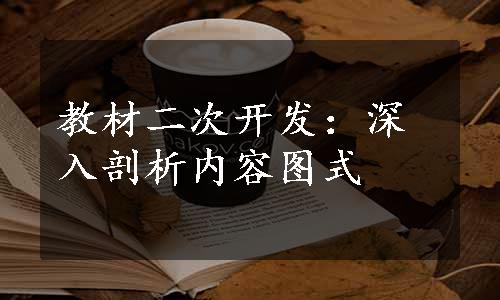
所谓内容图式即与文章内容相关的背景知识,包括历史、文化、政治等,而内容图式也分显性图式和隐性图式。所谓显性图式指与文章某部分内容直接相关的,如Fruitful Questions中提到的Nicholas Copernicus,Reuben Mattus和Edward Jenner,看到这三个人,读者就可以联想到与其相关的信息。而在Why I Teach中如果学生要真正理解Being a teacher is being present at the creation,when the clay begins to breathe,就必须了解上帝造人的故事,而这种图式我们称为隐性图式。缺少相关的图式学生可能能够翻译,但未必代表真正理解。而要真正理解就必须具备相关的图式。
有时,缺少相关图式,翻译甚至都不会准确。还是以Why I Teach一课为例,如果学生缺乏上帝造人的相关图式,就无法正确理解文章最后一句话:I teach because being around people who are beginning to breathe,I occasionally find myself catching my breath with them。对于“catch my breath”,课文给出的释义以及网络释义都是“屏住呼吸;倒吸一口气”,而这个意思显然与课文所表达的意思不符。到底如何理解与前面提到的being present at the creation,when the clay begins to breathe有关,这句话中catching my breath with them既包含因为学生成长而感到惊喜,又包含自己也同时成长的意思在里面。
仍旧以Chinese Humanism为例,文章中林先生引用了一首儿歌解读中国人对至善的理解。但是,目前又有多少人听过或读过下面这个儿歌呢?
云淡风轻近午天,傍花随柳过前川;
时人不识余心乐,将谓偷闲学少年。
既然学生缺乏相应的图式,加之林先生的翻译未必完全传达上面儿歌的韵味、含义,学生很难真正理解下面的英译:
While soft clouds by warm breezes are wafted in the morn,(www.xing528.com)
Lured by flowers,past the river I roam on and on.
They’ll say,“Look at that old man on a spree!”
And know not that my spirit’s on happiness borne.
中国的教育体制使得学生在中学阶段不可能接触哲学,除非学生个人对哲学有着独特的兴趣。而哲学图式的缺乏就构成了影响学生理解Chinese Humanism一文的主要因素。比如,如果学生不了解苏格拉底,就很难理解As there is usually too much pain and misery in this life to allow a perfect answer to satisfy man’s pride,teleology is therefore carried over to the next life,and this earthly life is then looked upon as a preparation for the life hereafter,in conformity with the logic of Socrates,which looked upon a ferocious wife as a natural provision for the training of the husband’s character。中国的中学生乃至大学生恐怕对尼采了解不多,自然就很难理解This way of dodging the horns of the dilemma sometimes gives peace of mind for a moment,but then the eternal question,“What is the meaning of life?”comes back.Others,like Nietzsche,take the bull by the horns,and refuse to assume that life must have a meaning and believe that progress is in a circle,and human achievements are a savage dance,instead of a trip to the market。由于不了解基督教,不理解涅槃,不理解什么是形而上学,对于for the idea that we live in order to die,as taught by Christianity,is incomprehensible;nor in Nirvana,for that is too metaphysical恐怕就变得似懂非懂。
但是,如何处理图式呢?有的教师喜欢做读前介绍,或者自己介绍,或是要求学生检索。对于Chinese Humanism一文,如果我们真的想让学生学到东西,真正理解课文,恐怕要做大量的图式准备,否则学生对课文的理解也只是停留在字面上而已。切记,能翻译成汉语不代表就是真正地理解。但是,图式的处理不等于简单的激活或补缺。如果图式激活的是学生已有图式,对于学生不具备的只有补缺。但是,如何运用需要考虑图式干预的效果。笔者在教授Fruitful Questions单元时,以自己任教的两个班为被试,一个班级做图式补缺,另外一个班不作任何图式干预,检验图式补缺对学生对My kids were doing what Copernicus did,they were doingwhat Reuben Mattus did,they were doing what Edward Jenner did的理解。研究发现,图式补缺对学生的理解没有任何帮助,学生的理解仍旧停留在字面意思,更是无法理解作者为什么说In short,they were doing what every scientist who’s ever made an important discovery throughout history has done。这是因为,即使学生了解了哈根达斯的故事,知道了天花的故事,却无法体会范式转变的重要性。与图式激活相比,图式补缺很难促进学生的理解,因为图式的空白使得学生无法产生共鸣。
免责声明:以上内容源自网络,版权归原作者所有,如有侵犯您的原创版权请告知,我们将尽快删除相关内容。




